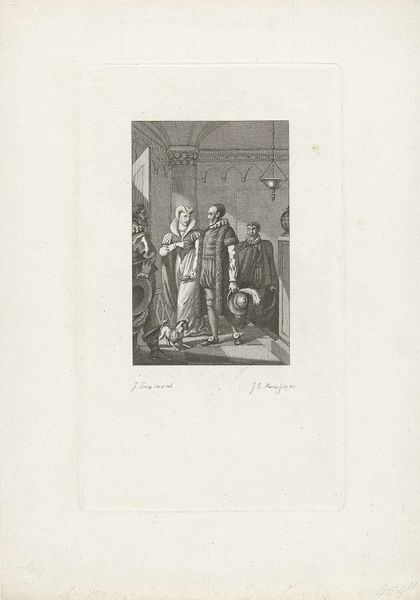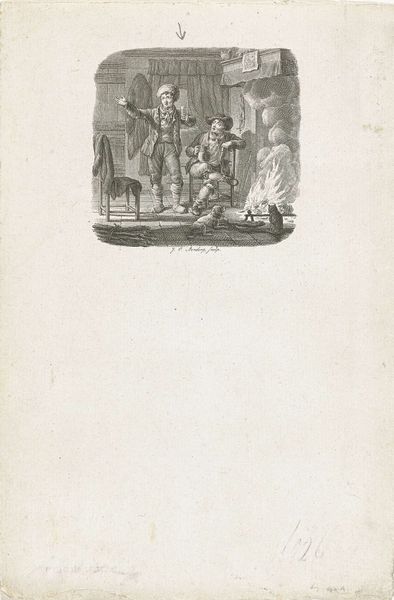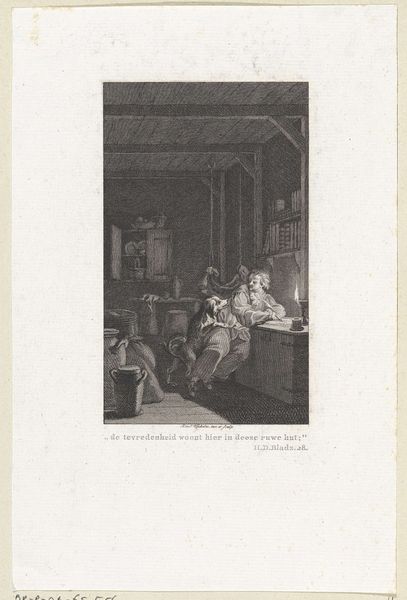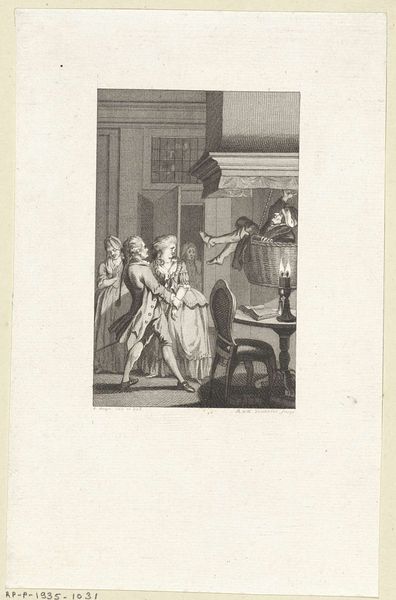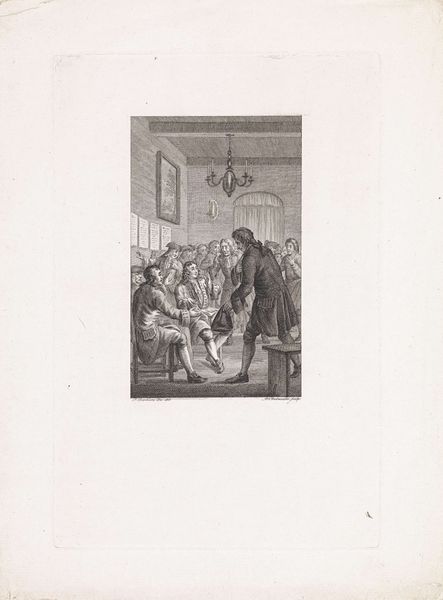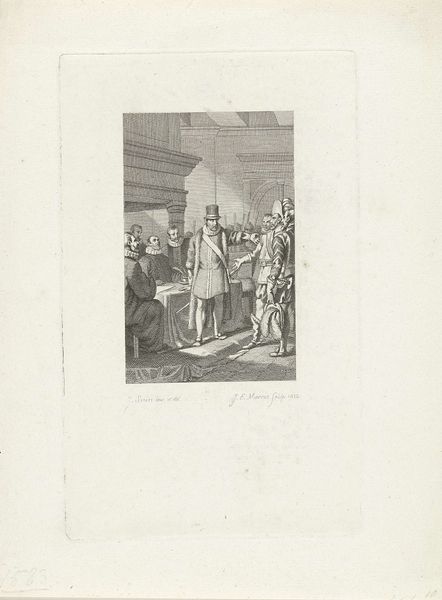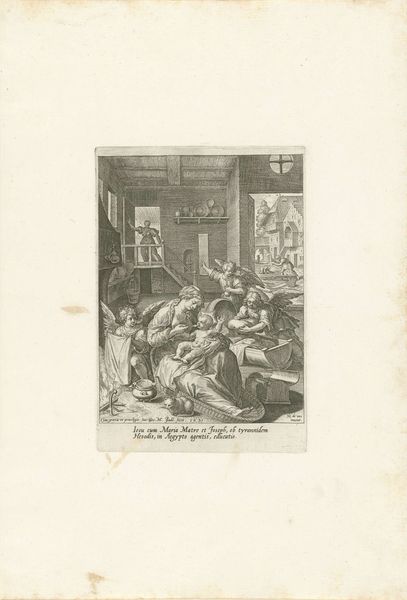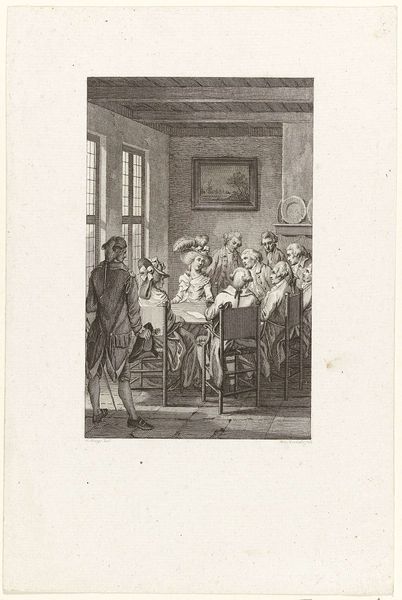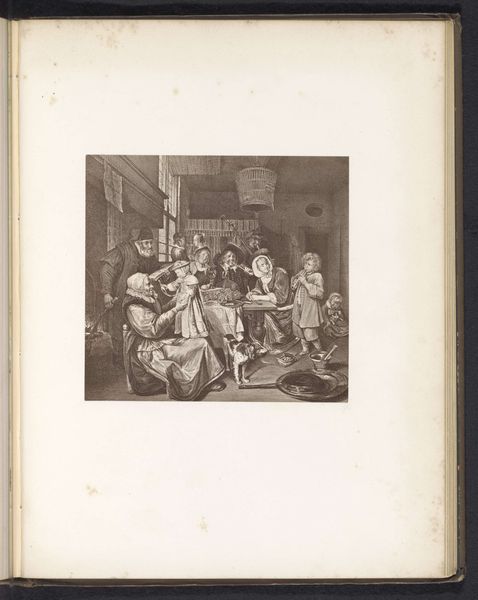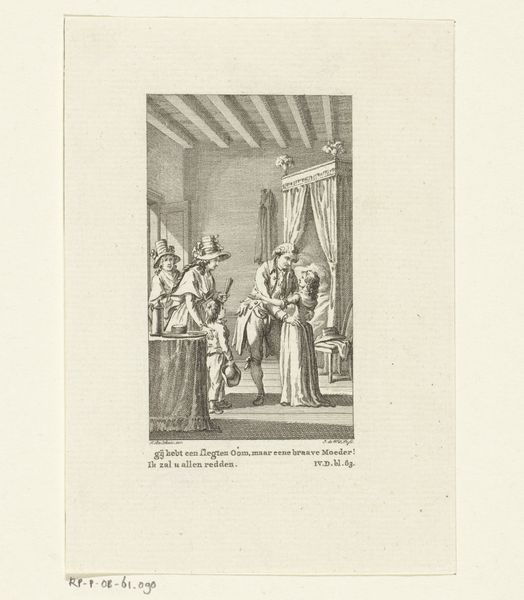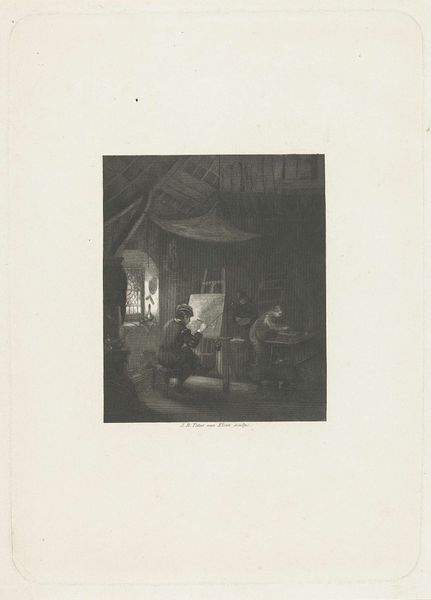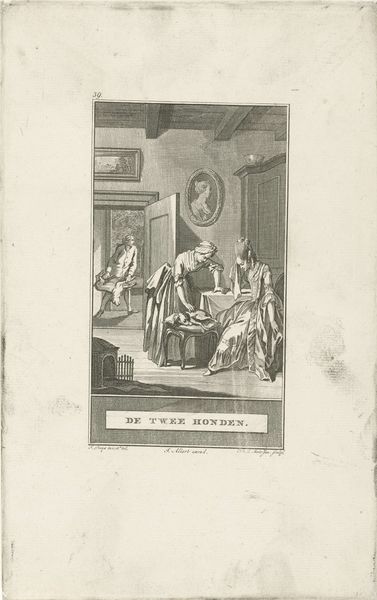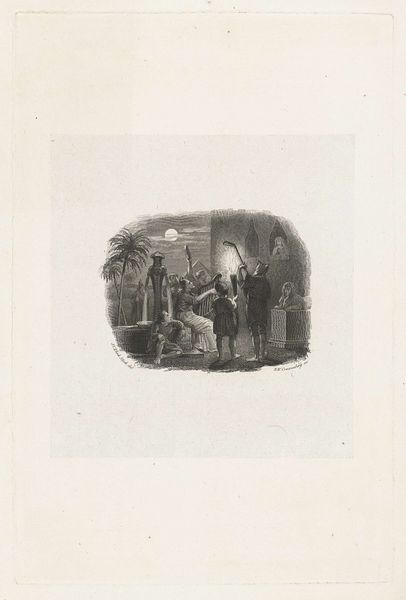
drawing, print, engraving
#
drawing
#
aged paper
# print
#
figuration
#
line
#
genre-painting
#
history-painting
#
engraving
#
realism
Dimensions: height 239 mm, width 145 mm
Copyright: Rijks Museum: Open Domain
Curator: Let’s turn our attention to this print from 1821 by Jacob Ernst Marcus titled "Maarten Neijen te Antwerpen, 1574" currently held in the Rijksmuseum collection. What are your initial impressions? Editor: My first impression is one of subdued industriousness. There's a stark contrast between the working-class figures on the left and those adorned in what I imagine are status symbols. It draws me to the implied narrative about their class dynamics. Curator: Indeed, that contrast is key. The print depicts a scene seemingly plucked from Antwerp in 1574, a turbulent period marked by the Dutch Revolt. Neijen, presumably the man being visited, occupies a distinct socio-political position, highlighted through dress, surroundings, and labor practices. The act of production, that engagement with materials, takes centre stage, in my view. How does that contrast inform a critical read of the piece? Editor: I see this as an exercise in the idealization of a very gendered, classed idea of labor at the intersection of industry, domesticity, and capital. Here we see both a historical tableau and perhaps a suggestion about the value attributed to specific types of work. Who profits from this meeting, and at whose expense? Curator: It raises questions about the romanticism of labor versus its reality. We should consider the nuances of this composition and what we can learn about labor relations through materiality. Editor: Perhaps the relative starkness is a function of the line-based medium: engraving. Consider the impact on the way the viewer is drawn into specific areas of the print. Are we meant to focus on those luxurious fabrics or the tools of the artisans? Curator: Absolutely. Marcus’s choice of medium speaks to an interest in the means of reproducing historical narratives for consumption. Each etched line constructs not just an image but also reinforces societal perceptions. The work then performs a function that is partly celebratory, partly analytical, as it portrays a period, people, and set of values, from a different point in time. The role and agency of all these figures within these complex matrices is difficult to extract definitively. Editor: Examining this piece through the lens of class and gender is really enlightening. Curator: Yes. Focusing on these intersecting dynamics invites an expansion of conventional historical analyses. Thanks for highlighting its implications for social justice.
Comments
No comments
Be the first to comment and join the conversation on the ultimate creative platform.
